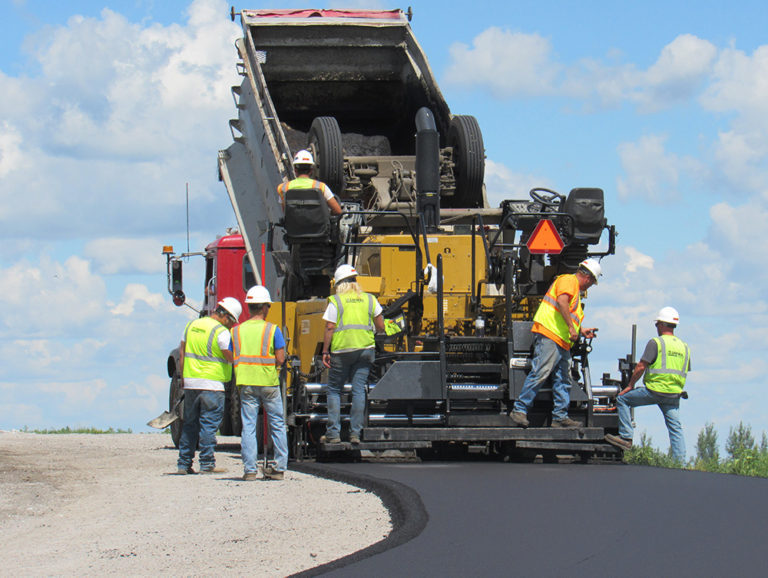With an industry-wide labor shortage and an economy resurging after a global pandemic, the construction industry is scrambling to staff jobs and complete projects. According to an AGC and Autodesk survey in mid-2022, 66% of contractors had projects that were delayed because of labor shortages.
With an increasing need for skilled labor, many are now turning to historically underrepresented populations, like women and minorities, to fill this gap.
The statistics show a surge in women in construction since 2016. They now make up 14% of the construction labor force. Top states for women in construction include Washington DC, Arizona, Florida, Washington, and Oregon. There has also been a rise in the number of Hispanic and African American women in the industry.
What has fueled this surge? It’s a combination of an extreme need for labor and focused efforts to attract more women and minorities to the industry.
Industry Suffers From a Long-Standing Labor Shortage
Associated Builders and Contractors Chief Economist Anirban Basu calls the labor shortage “the most acute challenge facing the construction industry despite sluggish spending growth.” In February 2022 ABC predicted that the industry would need to attract nearly 650,000 additional workers on top of the normal hiring pace for 2022 and would need 590,000 new workers in 2023.
The industry shortage of workers goes back decades, as baby boomers have reached retirement age and left in droves. The pandemic alone led an estimated 3.2 million to retire in 2020, which is over a million more than any other year before 2016. Add the fact that younger workers aren’t choosing to enter the construction and design fields, and you quickly see the difficulty.
The industry is losing workers faster than it’s gaining them.
Enter women and minorities to fill those positions.
While women may have always worked in construction, they have always been a relatively small percentage of the industry workforce, especially when compared to other industries. In 2010, women were 9% of the construction workforce and 59% of the services industry, 54% of the finance industry, and 45% of the public administration industry. Overall women made up 47% of the workforce at that time. In 2019 women were 10.3% of construction workers while they maintained 47% of the total workforce.
Lauline Mitchell, current president of the National Association of Women in Construction (NAWIC), remembers often being the only woman in the room when she began her career over 20 years ago. And now “I’ve actually been on an all-female team, which was pretty awesome, but I couldn’t have imagined that when I first started doing this kind of work.”
How to Attract More Women to the Industry
There are many programs and campaigns that have attempted to attract younger women workers to the industry. Their tactics center around improving recruiting, removing barriers, and helping women stay on the job once they’re hired.
Focused Recruiting Efforts
The industry has been making concerted efforts to reach out to younger students and even children to show them the benefits of working in the industry. Educators recommend beginning career education as early as kindergarten. Increasing awareness of construction jobs early will lead to more students joining apprenticeship programs and enrolling in construction related educational programs.
Organizations like NAWIC have been reaching out to kids and students for many years trying to grow interest in the industry. They sponsor contests like Block Kids and CAD/drafting to encourage students to think about the industry when it comes to picking a career. Some chapters also sponsor construction career days, allowing students the opportunity to experience the work firsthand.
Also, higher education facilities like community colleges and universities are offering more construction and design related programs. Besides the standard courses for architects and engineers, many provide programs for CAD drafters and construction project administration. The more programs offered, the more students they will attract.
Part of the draw to the industry is the fact that construction jobs pay well. On federally funded projects, tradesmen like plumbers and electricians can earn over $50 an hour plus benefits ($104,000 per year). Many people don’t think of a construction career when they think of high-paying jobs, but many of these jobs provide comfortable incomes for workers and their families.
And while the industry may be slow in recruiting women, it has one of the better records for pay parity. According to the National Association of Women in Construction, women in the industry earn on average 99.1% of what men make for the same positions. The overall parity rate for all industries is only 81.1%.
Remove Barriers
The industry has a reputation for being male dominated and a bit rough around the edges. Some construction company cultures could even be characterized as hostile to women. Mitchell said she often felt that men believed she didn’t know her stuff, until she interacted with them and showed she did. “Once I began to show people that I understood what they were talking about, I knew the drawings, could go find what they needed or I could help them, then I began to break down those barriers. But it’s always a challenge.”
Luckily, companies and the industry as a whole are changing. Hazing and other harassment is no longer acceptable, and companies are cracking down on it.
Helping Women Stay on the Job
Technology is leveling the playing field for many women in construction. With advancements in tool and equipment technology less physical force is needed to work with them. Exoskeletons can help women lift more weight, and equipment controls that mirror a video game can be worked by those with smaller statures. In fact, some are finding that women can work in places many men can’t due to their smaller size.
Once women are hired, they often need on-going support to help them deal with the stresses of being a minority. Some companies have created work groups to support their female employees. Others provide training to all employees to help them identify and stop harassment.
Mitchell says the tide is shifting when it comes to women getting the respect they deserve in the industry. “Now that we’re here, others have realized or recognized that we can do the job. So, we’re just a part of the team now and it’s becoming more commonplace.” Although there is a way to go, the industry as a whole is recognizing the benefits of employing women in key positions, and companies are reaping the rewards.







